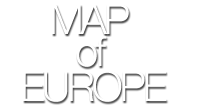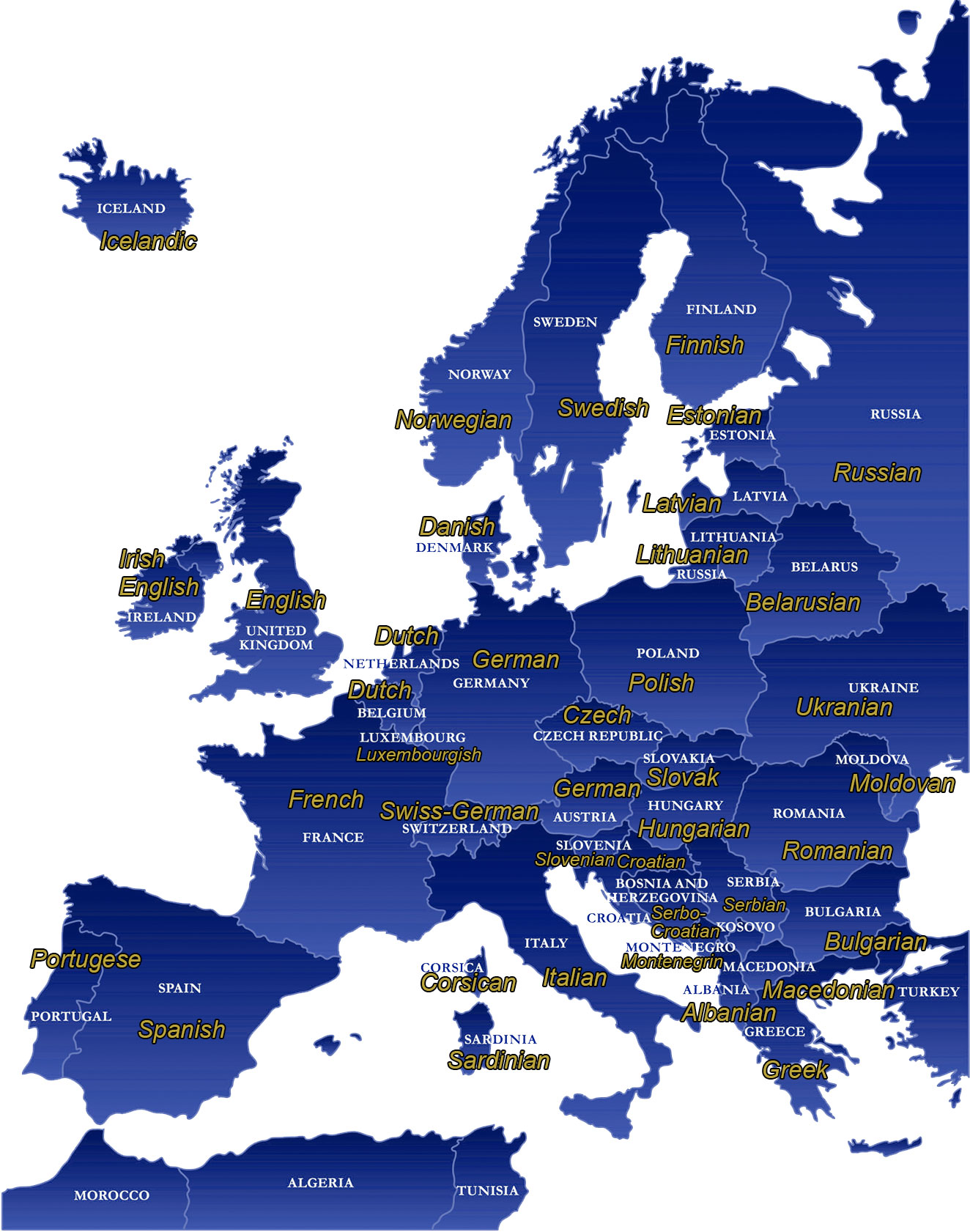Map of the Languages of Europe
You can click on the map above to get a visual relationship of the languages and the countries they are attached to. We recognise that the term “official language” can be somewhat debated. So what we have put together here is a map of the most spoken/official language of the countries of Europe.
Fr clarity we have added a table of the official national languages and also the spoken languages in a country. There are times we have to make decisions about language naming convetions mostly due to room on the map. The Balkan nations are packed together and leave little room for names. So in Bosnia-Herzegovina we have shortened the language name to Sebo-Croatian, which technically is not accurate.
We realise there are some inconsistencies in the map. An example is that we have listed Corsican as a language of Corsica but not included it in the table. We will be updating the table in the next few months to more accurately represent situations like these.
| Country | Official and national Languages | Other spoken Languages | |
| Albania | Albanian (Shqip, Tosk (Toskë) is the official dialect) | Shqip-Gheg dialect (Gegë), Greek, Italian | |
| Andorra | Catalan | French, Castilian, Portuguese | |
| Austria | German, Slovene (official in Carinthia), Croatian and Hungarian (official in Burgenland) |
||
| Belarus | Belarusian, Russian | ||
| Belgium | Dutch 60%, French 40%, German less than 1% | ||
| Bosnia & Herzegovina | Bosnian, Croatian, Serbian | ||
| Bulgaria | Bulgarian | Turkish | |
| Croatia | Croatian (hrvatski) | ||
| Cyprus | Greek, Turkish, English | ||
| Czech Republic | Czech (cestina) | ||
| Denmark | Danish (dansk) | Standard German | |
| Estonia | Estonian (eesti keel) | Russian, Ukrainian, Finnish | |
| Faroe Islands | Faroese, Danish | ||
| Finland | Finnish (suomi) 93.4%, Swedish 5.9% | small Sami- and Russian-speaking minorities | |
| France | French (français) | ||
| Germany | German (Deutsch) | ||
| Gibraltar | English | Llanito (a mixture of Spanish and English), Spanish | |
| Greece | Greek (elliniká, the Koine-Demotic version) | Turkish (Northern Greece) | |
| Greenland | Greenlandic Inuktitut (Kalaallisut), Danish | ||
| Hungary | Hungarian (magyar) | German, Romanian | |
| Iceland | Icelandic | English, Nordic languages, German widely spoken. | |
| Ireland | Irish (Gaeilge), English (generally used), | ||
| Italy | Italian (italiano) | ||
| Latvia | Latvian (latviesu valoda) | Lithuanian, Russian | |
| Liechtenstein | German | ||
| Lithuania | Lithuanian (lietuviu kalba) | Polish, Russian | |
| Luxembourg | Luxembourgish (LÎtzebuergesch, the everyday spoken language), French (administrative language), German (administrative language) |
||
| Macedonia, Rep. of | Macedonian 68%, Albanian 25% | ||
| Malta | Maltese (Malti) | English | |
| Moldova | Moldovan (virtually the same as the Romanian language), | Russian, Gagauz (a Turkish dialect) | |
| Monaco | French | Monegasque, English, Italian, | |
| Montenegro | Serbo-Croatian (Ijekavian dialect – official) | ||
| Netherlands | Dutch (Nederlands, official language), Frisian (official language) | ||
| Norway | Norwegian (nynorsk and bokmal) | small Sami- and Finnish-speaking minorities | |
| Poland | Polish (polski) | ||
| Portugal | Portuguese (português) | ||
| Romania | Romanian (romana) | Hungarian, German | |
| Russian Federation | Russian | ||
| San Marino | Italian | ||
| Serbia | Serbian 95%, Albanian 5% | ||
| Slovakia | Slovak (slovensky jazyk) | Hungarian | |
| Slovenia | Slovenian (slovenski jezik) | ||
| Spain | Spanish (español – the Castilian version) 74%, Catalan 17%, Galician 7%, Basque 2% |
note: Castilian is the official language nationwide; the other languages are official regionally. |
|
| Sweden | Swedish (svenska) | small Sami- and Finnish-speaking minorities. | |
| Switzerland | German 63.7%, French 19.2%, Italian 7.6%, Romansch 0.6% | ||
| Turkey | Turkish (türkçe) | Kurdish, Arabic, Armenian, Greek | |
| Ukraine | Ukrainian | ||
| United Kingdom | English | Welsh (about 26% of the population of Wales), Scottish form of Gaelic (about 60,000 in Scotland) |
|
| Vatican City State | Latin, Italian | French and various other languages. |

